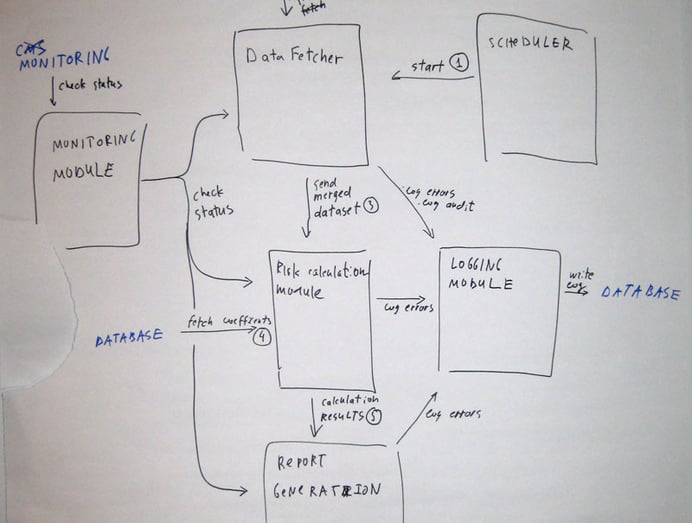
The rise of technology and digital solutions across various industries is something that can’t be ignored by companies looking to stay afloat amongst their competitors. In the communications industry, the power and capabilities of automation are no longer an optional-add on functionality, they are a necessity for businesses that are serious about elevating their productivity, streamlining their communication processes, and gaining greater market share.
Thus, the need for specialized tools and software capable of leveraging these functions has sped up the rate of digital transformation among communication service providers. Despite that, many businesses subscribe to the notion that building an in-house software solution is a faster, cheaper option than opting for purchasing a pre-built, ready-to-go tool.
But is this really the case? Many times, companies fall into the trap of investing copious amounts of time and money into developing software without realizing the full implications and commitment required. Let’s take a closer look at some of the resources needed to successfully custom build an engagement solution, and assess if it’s genuinely viable.
What Do Companies Need to Build a Custom Engagement Solution From Scratch?
1. Resources:
Firstly, if you’re serious about building your own solution, you’ll need a precise understanding of the exact resources you’ll need to see it through. These include:
- Human resources - you will need to make sure you have sufficient human resources who can dedicate their time solely to building, customizing, and testing your tool. You will likely need to consult with a project manager who has proficiency in building software to get an idea of exactly how many developers you will need to put on the project and hire external developers if it exceeds your in-house team.
- Expertise - The developers are going to need a clear understanding of the tool you want them to build, what services it must leverage, and how you want it to work. That will require collaboration between various heads of department to draw up a clear plan of the tool’s functionality and features, and then consulting with the lead developer to discuss if these features can realistically be developed, with time allocated for reviews and amendments to the plan if need be.
- Finances - You need to ensure you have sufficient investment capital to finance the development of the tool, from conception to completion. This includes assets required, such as additional hardware if you are hiring more developers, compensation for the labor to build the software, commission to any external SMEs or consultants, and overtime pay if the development doesn’t progress according to the deadlines of the project.
2. Time:
Companies are often mistakenly optimistic about the lead time that’s required to build a custom software solution from the ground up. This can be anywhere from several months to a year if the software has limited features, and can take more than a year if the tool needs to be responsive and customizable according to scaling needs.
A factor that many businesses don’t take into account regarding development is that developers don’t only need time to build the tool. They need time to test it, identify errors and bugs, fix those errors, and re-test it.
The requirements gathering process can also provide a significant source of delay. Software vendors typically have a custom requirements process with specific tools that mesh with their software. In addition, the vendor contract drives behavior on both sides that keep everybody honest and on schedule. With a from-scratch development there is no pressure on the requirements process, which often continues unabated well into the original development timeframe.
3. Implementation:
Taking into consideration the lengthy development, testing, amending, and re-testing lifecycle of creating custom software, the slow creation process is further stymied by the implementation and roll-out of the tool.
After the developers have eventually created and tested the tool to completion, they then need to spend time teaching the necessary heads of departments how to use the tool and its various capabilities.
These department heads then spend time training their teams on how to use them, which can necessitate several rounds of training. This lengthy implementation and roll-out process takes employees’ time away from their work, diverting their attention from the products or services provided to your clients, and impacting customers’ experiences.
4. Cost:
Lastly, the final cost to develop and oversee a customized tool can end up being a lot more than originally estimated. Countless hours, often stretching into months and even years, to develop the tool, coupled with the back-and-forth procedure of piloting and refining its capabilities, make it an extremely expensive undertaking.
How much it will ultimately cost will depend on how advanced and competitive you want the software to be, the amount of time and resources it will take to build, and how much external consultation and recommendation you will need to outsource to accurately plan and conceptualize.
Some companies are lured into the belief that their custom build, though initially expensive, will provide a lower long-term cost profile when compared to annual SaaS fees from an external vendor. In most cases they underestimate the cost of the required maintenance team whose cost increases by the cost-of-living each year.
Conclusion:
Although building your own solution from scratch is possible, when looking at the practicality, it’s a massive undertaking of time and effort that businesses simply don’t have. A smarter, simpler solution is to opt for a fully developed, ready-to-implement SaaS tool, like AwareX.
AwareX is a fully cloud-based platform that offers a range of capabilities enabling communication service providers to connect with their customers in a fully digital sphere, transforming customer journeys and reducing manual traffic to call centers and agents.
Offering native back-end integration, Awarex seamlessly integrates to your business’s systems, while presenting a universal front-end experience to your customers, no matter what platform they use to contact you. With Awarex, you can predictably deliver a consistent, personalized, and intentional digital experience to your subscribers faster and at a lower cost of ownership.

